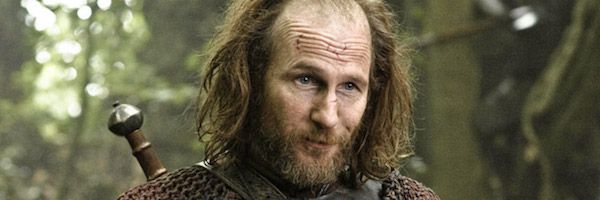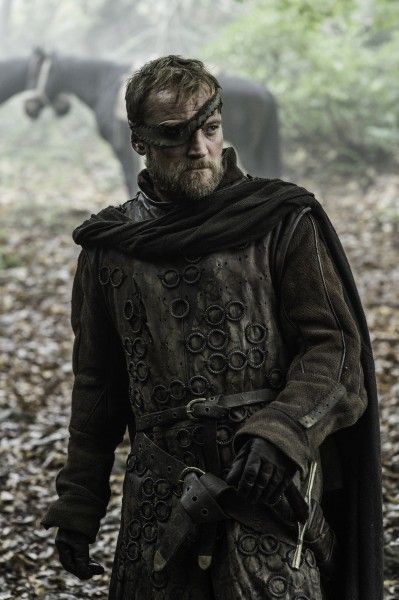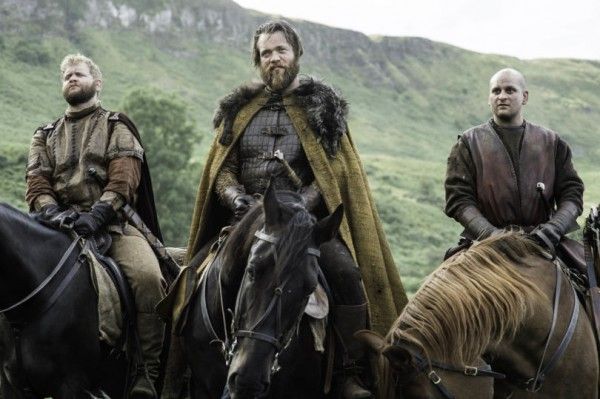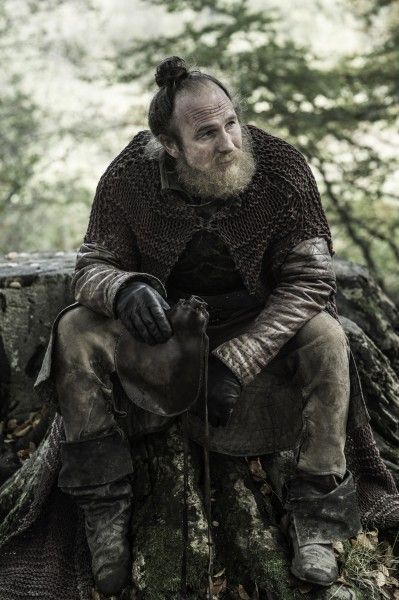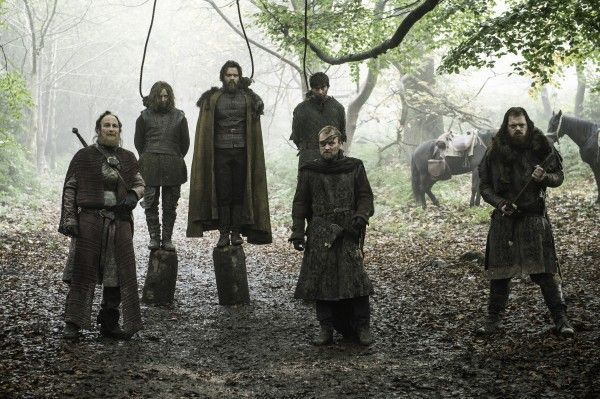Game of Thrones is really diving deep this season, and bringing back characters and plot threads we haven’t seen in years. Last week’s episode brought back Sandor “The Hound” Clegane, which suggested perhaps the CleganeBowl was still on. But it looks like The Hound was brought back to help reintroduce us to the Brotherhood without Banners, a rogue group who we haven’t seen since Season 3.
Below, we’ll look at the Brotherhood and its key members Beric Dondarrion and Thoros of Myr, as well as one character we haven’t seen yet, but who may actually make an appearance after all. If you want to strictly stick to refreshers from the show and not dive into that potential special return, skip the “From the Books” section. However, be careful — comments will be open to speculation about the books and the show.
From the Show
If you’ve read the A Song of Ice and Fire books, you’ll be more familiar with the role of the Brotherhood, Beric Dondarrion, and Thoros of Myr, but if you’re just a show watcher, you really shouldn’t have been expected to remember them at all. Barely mentioned in Season 2 as a group of outlaws who refuse to live under the crown’s control, the Brotherhood made another brief appearance in Season 3 when they captured Arya, Hot Pie, and Gendry on their way to Riverrun. They also happen to have grabbed the Hound, who identifies Arya, which leads the Brotherhood to take her hostage.
But let’s back up — who are these people really, and why do we care? First let’s look at the connections to the other parts of Game of Thrones story. Thoros is a priest of the Red God / Lord of Light / R’hllor, the same as Melisandre and the Red Woman in Meereen that Tyrion asked to help spread the positive word about Dany to her followers. The most important thing to know about Beric Dondarrion is that he has been resurrected many times. Through Thoros’ power, he is continually being brought back — a power shared by other followers of the Lord of Light. This was a huge reason why book readers in particular refused to believe Jon Snow was dead. With Melisandre at the Wall at the time, and a foundation of resurrection mythology already in place, it seemed a fairly obvious outcome.
Back to the Season 3 story — Arya travelled with the Brotherhood for awhile before the Hound was put on trial by Beric at their home base in the Riverlands, for which the Hound chose trial by combat and won, killing Beric (who was then resurrected). After the Hound was released, Arya learned about some of the nuances of resurrection mythology (increasingly losing memories, not coming back “whole” again), but was soon captured by the Hound, who had been lying in wait.
Now, three seasons later, we saw a faction of the Brotherhood slaughter the utopian sept village that the Hound was convalescing in, causing him to track them down and make them pay for their sins (which of course he did easily). It was a strange want to re-introduce the Brotherhood, who then got a much better and more extended chance at redemption when we again met Beric Dondarrion and Thoros of Myr in "No One."
But why bring the Brotherhood into things now, after Jon Snow has been resurrected? What are we gaining from their return? One more note: Gendry (the only true living son of Robert Baratheon) ended up joining the Brotherhood for a bit … but was traded to Melisandre for two bags of gold. Later Davos helped him escape, and left him rowing back to Westeros (which he’s either still doing, or he’s dead, or he’s back there somewhere). This could also be significant. Or not.
From the Books
There’s still one resurrection we have yet to see. In the books, after the Red Wedding, Catelyn Stark’s corpse was thrown into the river. The Brotherhood found her and resurrected her water-logged, throat-slit body, but she was not the same. Unlike Jon Snow, she became cold and calculating, with her mind solely set on revenge of those who killed her family. From there, she takes the name Lady Stoneheart, and leads the Brotherhood in a quest of vengeance. Hanging, it should be noted, is her preferred way of dealing with those who get in her way — Lannisters, Freys, Boltons, whomever.
She also puts an interesting hitch in the stories of Jaime Lannister and Brienne of Tarth, which hasn’t happened in the show. However, in “No One,” there were a lot of allusions and references to Catelyn. Granted, a good deal of the story took place at Riverrun, her home, and with her brother (Edmure) and her uncle (The Blackfish). Even still, to devote so much time on an already crowded show to a long-dead woman seems strange, unless there’s a chance we’ll see her again. So, Lady Stoneheart, are you coming? George R.R. Martin has said no, and showrunners Dan Weiss and David Benioff haven’t commented much. (However, we were also told the Hound wasn't coming back). Michelle Fairly, who played Catelyn, has said in the past that Catelyn “is dead” which as we know means nothing on this trolling show, so …
The Future
The Brotherhood tells the Hound that they are heading North to fight a great evil. Is that the Boltons or the Night’s King? Or both? It’s surprising that the Brotherhood would feel they have a dog in this fight, so to speak, being bannerless and all. Unless, of course, they have someone else with an agenda secertly leading them. Thoros mentions that Beric has been brought back so many times for a reason, but he doesn’t possess any magical powers on his own — his main power is coming back to life. So how would he fight the Night’s King? Unless the Brothers plan to raise their own army of the undead?
It’s worth noting that there’s one more interesting resurrection story in Game of Thrones, and that’s of The Mountain (the Hound’s brother, lest we forget). His resurrection wasn’t through magic though, but “science” — the mad machinations of Qyburn, a kind of Victor Frankenstein figure. The Mountain has been Cersei’s protector, and still remains so even though her Trial By Combat has been abolished by Tommen and the Faith Militant. So what role might the Mountain and Qyburn’s experiments play moving forward? Will it continue to build this resurrection mythology, and to what end? Will the army of the undead not be fought by dragons, but even more undead?
As for Catelyn’s revenge arc in particular, it’s possible that Sansa and Jon have become a kind of hybrid of it, with Jon returning from the dead and Sansa focused on reclaiming Winterfell (though not killing all Lannisters and Freys — yet).
Speculate with us in the comments — do you think that Lady Stoneheart will be finally making her appearance, with so many hints in “No One”? Weiss and Benioff aren’t exactly known for subtlety, so unless they are doing some major misdirection, it seems like Stoneheart could be coming.

